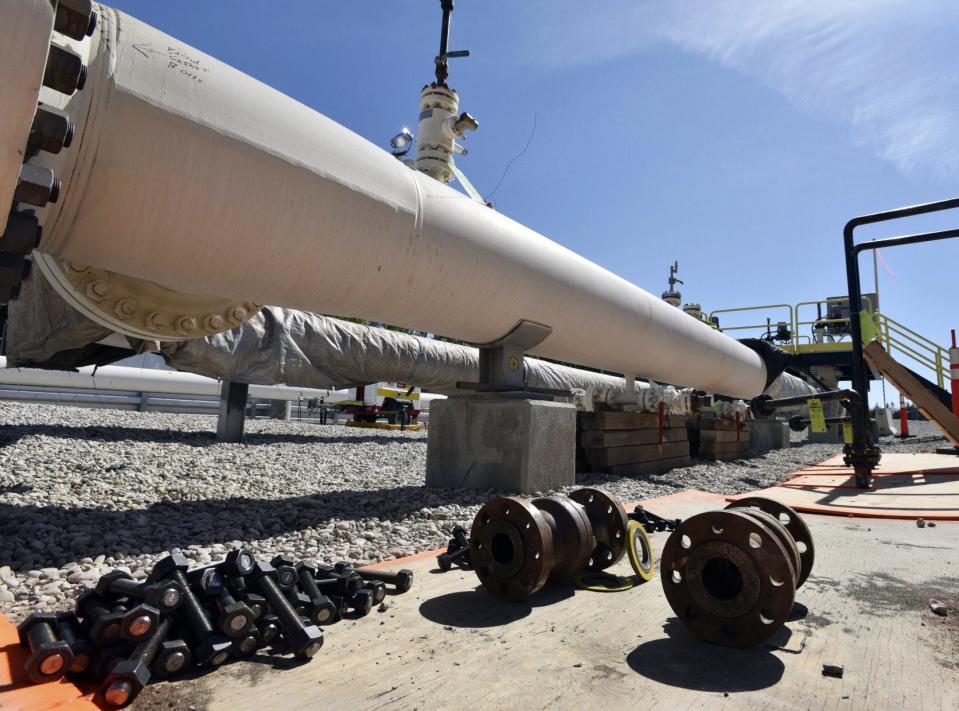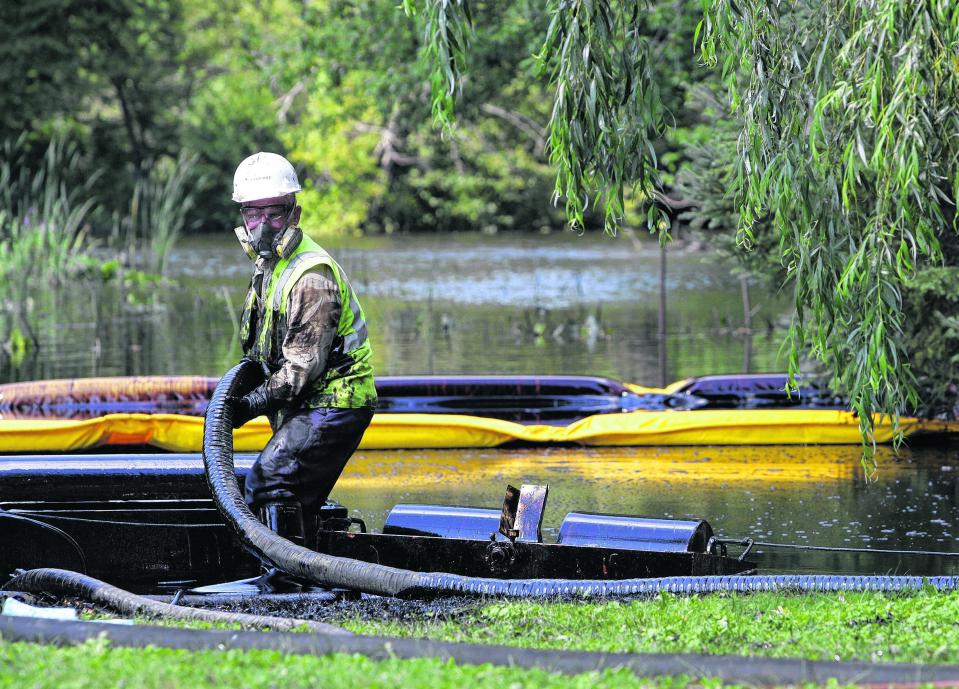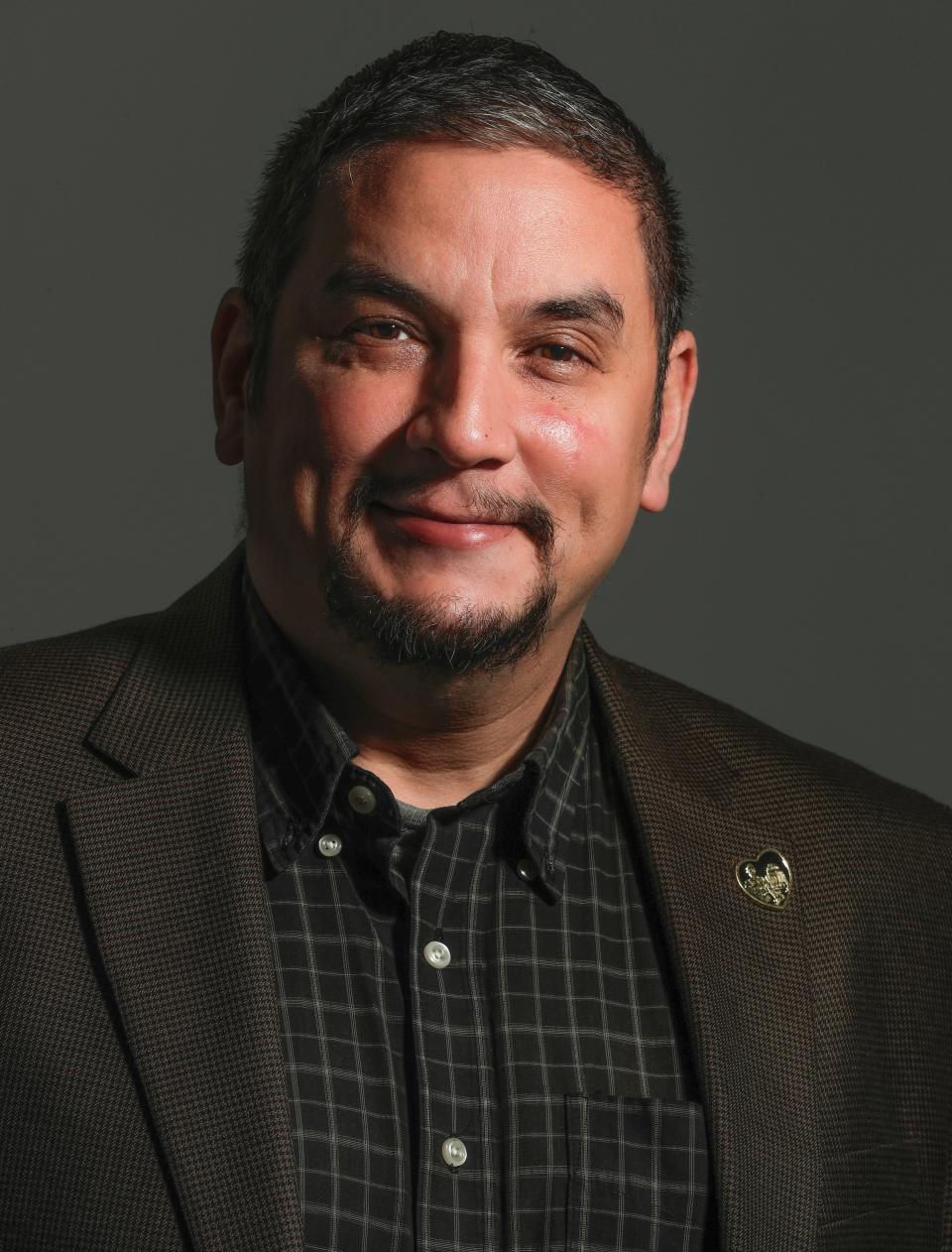Tribal officials call for federal review of Wisconsin oil pipeline project they say could kill rare species
Researchers with the Great Lakes Indian Fish and Wildlife Commission say their surveys have found that much more endangered species could be affected by a proposed pipeline in Wisconsin than an oil company found in its own surveys.
“We’re concerned rare plants and animals will be disturbed or killed by this operation,” said John Coleman, environmental section leader for the Great Lakes Indian Fish and Wildlife Commission.
The Canadian company Enbridge Energy has proposed an oil pipeline replacement project in northern Wisconsin called Line 5.
About 12 miles of its active pipeline passed through the Bad River Indigenous Reservation near Ashland near the shore of Lake Superior.
As easements for that section have started to expire, the tribe filed a lawsuit in 2019 to have the pipeline removed from the reservation. As a result, the company has proposed a new 41.2-mile section that would go around the reservation, but Bad River officials are calling for greater scrutiny of the project.
“GLIFWC tries to stay in line with what our member tribes want,” Coleman said.
GLIFWC represents Ojibwe tribal interests in the Ceded Territories in northern Wisconsin, Minnesota and Michigan.
RELATED: Why activists in Green Bay are calling for an environmental study of an oil pipeline project

Coleman said that while Enbridge reported only two occurrences of a rare plant called Braun’s Holly Fern in a land survey for its project, researchers for GLIFWC found 10 occurrences within a 1-mile stretch of the proposed project.
“We think (Enbridge’s survey) really grossly undercounted them,” he said.
And while Enbridge’s survey didn’t find any of the West Virginia white butterflies, Coleman said that GLIFWC researchers found a population of the rare insect in the area.
“Given our limited resources for surveying, the fact that we found so many is concerning,” he said.
Coleman said another rare animal, the American marten, which is similar to a mink or weasel, also is known to inhabit the area.
While an environmental impact study by the Wisconsin Department of Natural Resources is required for the Line 5 project, an Army Corps of Engineers federal EIS is currently not scheduled to occur.
Coleman said tribal officials are requesting a federal EIS be conducted to address concerns about impact on the the rare and endangered species and potential impacts to water quality.
“The state doesn’t have the same responsibility to tribes as the federal government does, such as with trust lands,” he said. “They (federal officials) must take tribal concerns into consideration.”
Bad River officials are also concerned the Line 5 project could impact water quality on the reservation.
Coleman said the project is proposed to cross 185 streams and riverways around the reservation, but which flow into the reservation.

Enbridge recently completed another pipeline replacement project in Minnesota called Line 3, which was met with grassroots Indigenous and environmentalist resistance and protests.
Coleman said GLIFWC officials did not challenge Line 3 as much as they are Line 5 because there wasn’t as much resistance by member tribal governments.
An online public hearing on the state’s environmental impact study is scheduled for Feb. 2. The comment period for federal permits for the pipeline to cross waterways ends March 7.

Sign up for the First Nations Wisconsin newsletter Click here to get all of our Indigenous news coverage right in your inbox
An Enbridge spokesperson said the company has supplied 100% of the oil refined in Wisconsin for more than 70 years.
“Pipelines are the safest way to transport the energy Wisconsin relies on,” said Juli Kellner, communications specialist for Enbridge. “We are working through the regulatory and permitting process and expect the reroute project will create 700 jobs and inject millions of dollars in construction spending into the local economy in the northeastern part of the state. We expect Native American workers to make up 10% of the project workforce.”
She said the company is working to address concerns and further detail how the temporary effects of construction will be further mitigated to avoid and protect sensitive and endangered species.
Kellner said, “If we were to transport the same amount of product by tanker truck, an estimated 2,100 trucks would need to travel east every day on U.S. 2 from Superior to transport products currently carried by Line 5."
Frank Vaisvilas is a Report For America corps member based at the Green Bay Press-Gazette covering Native American issues in Wisconsin. He can be reached at 920-228-0437 or fvaisvilas@gannett.com, or on Twitter at @vaisvilas_frank. Please consider supporting journalism that informs our democracy with a tax-deductible gift to this reporting effort at GreenBayPressGazette.com/RFA.
This article originally appeared on Green Bay Press-Gazette: Tribes: Enbridge Wisconsin oil pipeline project may kill rare species

